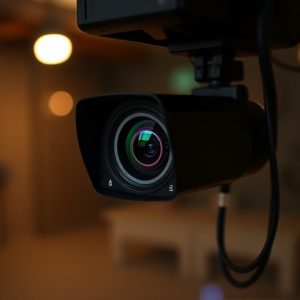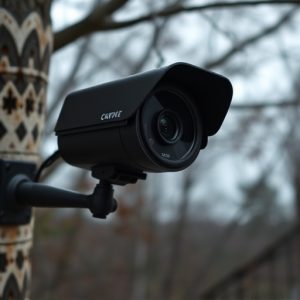Nanny Cam with Sound: Legal Installation Best Practices
Installing a Nanny Cam With Sound Recording requires strict adherence to local privacy laws, which o…….
Installing a Nanny Cam With Sound Recording requires strict adherence to local privacy laws, which often regulate audio recordings more heavily than video. Homeowners and businesses must understand consent requirements, especially when monitoring children or vulnerable adults. Legal experts should be consulted for guidance on camera placement, data storage, and retention periods to avoid legal repercussions. Transparent communication through notices and signage is crucial to obtaining explicit consent and fostering trust in surveillance practices involving Nanny Cam With Sound Recording technologies.
“Uncovering the best practices for installing a covert camera network, especially focusing on the ethical and legal aspects of a Nanny Cam with sound recording capabilities, is crucial in today’s world. This comprehensive guide delves into the intricate details of setting up a secure system while respecting privacy rights. From navigating legal considerations, such as obtaining consent and understanding regulations, to implementing robust technical security measures and establishing ethical monitoring practices, this article equips readers with essential knowledge for responsible camera network deployment.”
- Legal Considerations for Nanny Cam with Sound Recording
- – Understanding privacy laws and regulations
- – Obtaining consent from residents/employees
Legal Considerations for Nanny Cam with Sound Recording
When installing a nanny cam with sound recording, it’s crucial to understand and adhere to legal considerations to avoid potential privacy infringements. In many jurisdictions, capturing audio along with video is subject to stricter regulations than just video alone. This is because sound recordings can potentially capture private conversations or sensitive information.
Before setting up such a system, familiarize yourself with local laws regarding surveillance and wiretapping. Some regions require explicit consent from all parties involved for any form of audio recording. Ensure that the individuals in the monitored area are aware of the camera’s presence and give their consent, especially if they include children or vulnerable adults. Additionally, be mindful of specific restrictions on the use of nanny cams with sound, as these may vary based on the purpose of monitoring (e.g., for safety vs. employee monitoring).
– Understanding privacy laws and regulations
Understanding privacy laws and regulations is paramount before installing a covert camera network, especially for devices like nanny cams with sound recording capabilities. Different regions have distinct rules regarding surveillance and data collection, ensuring individuals’ rights to privacy are respected. For instance, many countries have specific guidelines on what types of recordings are permissible, where cameras can be placed, and who has access to the footage. Non-compliance can lead to legal repercussions, so it’s crucial to research and adhere to local laws.
Homeowners or businesses considering such installations should consult legal experts to ensure their rights and responsibilities are fully understood. This process involves evaluating potential zones for camera placement, understanding data storage practices, and knowing how long recordings can be kept legally. By staying informed about privacy regulations, you can maintain the integrity of your network while avoiding any unintended legal issues associated with covert surveillance equipment like nanny cams with audio capabilities.
– Obtaining consent from residents/employees
When setting up a covert camera network, one of the most critical considerations is ensuring compliance with privacy laws and respecting the rights of residents or employees. In many jurisdictions, installing hidden cameras without consent can be a serious breach of privacy and even illegal. Therefore, it’s essential to obtain explicit permission from all individuals who will be under surveillance, especially in shared spaces like dormitories, offices, or residential complexes.
Informing individuals about the presence of Nanny Cam With Sound Recording through clear notices and signage is a best practice. This transparency allows people to be aware of their surroundings and makes it harder for any illegal activities to go unnoticed. By obtaining consent, you also ensure that residents or employees are comfortable with the setup, fostering a sense of trust and security within the environment being monitored.
When considering installation of a covert camera network, especially for applications like nanny cams with sound recording, it’s crucial to balance security needs with stringent privacy laws. Always ensure compliance through understanding relevant regulations and obtaining informed consent from individuals whose privacy you’re monitoring. By adhering to these best practices, you can maintain a secure environment while respecting personal privacy rights.


